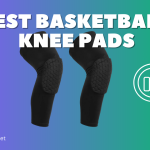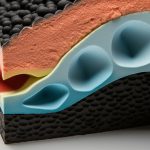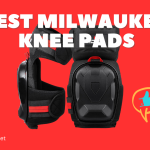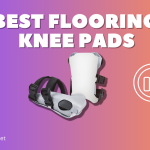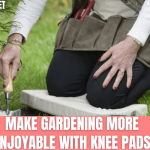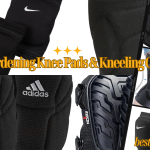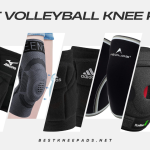As active individuals, we know the importance of protective gear during various activities. Knee pads are essential gear for those who engage in sports, fitness, or labor-intensive work that involves prolonged kneeling or bending. However, wearing knee pads that fit correctly is crucial for optimal comfort and injury prevention.
Key Takeaways:
- Proper fit is essential for knee pads to provide maximum comfort and protection during physical activities.
- Ill-fitted knee pads can cause discomfort, restrict movement, and lead to injuries.
- Measuring knee circumference and length is the first step in finding the right size for knee pads.
- Positioning and adjusting the straps of knee pads is crucial for a secure fit that allows freedom of movement without compromising protection.
- Maintaining knee pads through routine cleaning, inspection, and replacement ensures continued comfort and effectiveness.
Why Proper Fit Matters for Knee Pads
Proper fit is crucial when it comes to knee pads as it ensures maximum comfort and prevents injuries. Ill-fitting knee pads can have a negative impact on your knees, leading to discomfort and even injury during various activities.
When knee pads fit correctly, they provide ample protection and support to your knees. They can prevent bruises, scrapes, and fractures, reducing the risk of severe knee injuries that can cause long-term problems.
Moreover, a proper fit ensures that knee pads stay in the right position, without slipping or moving around. This way, knee pads offer consistent protection, eliminating the need to readjust them constantly during activities.
Wearing knee pads that aren’t the right size can cause discomfort and irritation. Knee pads that are too tight can restrict blood flow, leading to numbness and tingling in the knees. On the other hand, loose knee pads can cause friction, leading to painful blisters and chafing.
It’s important to note that knee pads are not one-size-fits-all. Finding the right size is crucial to ensure optimal protection and comfort.
In the next section, we’ll explore how to find the right size of knee pads to ensure a snug and secure fit.
Finding the Right Size for Knee Pads
Finding the right size of knee pads is crucial for their proper function. Wearing knee pads that are too small can restrict movement and cause discomfort, while wearing knee pads that are too big can result in inadequate protection.
Step 1: Measure Your Knee Circumference
Using a flexible measuring tape, wrap it around the middle of your knee, ensuring it is snug but not too tight. Take note of the measurement in inches.
Step 2: Measure Your Knee Length
Measure the distance from the bottom of your knee cap to about two inches above it. Take note of the measurement in inches.
Step 3: Determine the Right Size
Refer to the manufacturer’s size chart to determine the appropriate size based on your knee circumference and length. If your measurements fall between sizes, it is recommended to choose the larger size for a comfortable fit.
Remember to try on knee pads before purchasing to ensure the proper fit and comfort. Knee pads should fit snugly, without any gaps between the pad and your knee.
Tips for Properly Wearing Knee Pads
Wearing knee pads correctly is crucial for their effectiveness in protecting your knees. Here are some tips we recommend for properly wearing knee pads.
Positioning
Make sure the knee pads are centered on your knees. The pads should cover the front and sides of your knees, leaving no exposed areas. If the pads are not centered, adjust them accordingly. Remember to pull up your knee pads before engaging in any activity to ensure that they are in their correct position.
Straps
Adjust the straps so that the knee pads fit securely but not too tightly. Tightening the straps too much can lead to discomfort, while too loose can lead to the pads sliding down your legs. Ensure that the straps are fastened tightly enough to prevent any slipping, but not cutting off circulation. Check the straps regularly during the activity and adjust as necessary.
Freedom of Movement
Ensure that the knee pads allow for a full range of motion. You should be able to bend your knees and move around with ease. Knee pads that are too tight or too loose can hinder movement, making it difficult or even dangerous to engage in certain activities.
By following these tips for properly wearing knee pads, you can ensure maximum protection for your knees while maintaining your comfort and freedom of movement.
Tips for Maintaining Comfort and Effectiveness of Knee Pads
Once you’ve found the perfect fitting knee pads, it is important to maintain their comfort and effectiveness. Proper maintenance ensures the longevity of the knee pads and preserves their protective qualities. Here are some tips on how to achieve this:
1. Cleaning
After every use, take the time to clean your knee pads. Use warm, soapy water to remove any dirt or sweat that may have accumulated on the surface. Rinse thoroughly and allow them to dry completely before storing them away.
2. Inspecting
Regularly inspect your knee pads for any signs of wear and tear, such as holes or loose stitching. If any damage is found, replace the knee pads immediately to ensure continued protection.
3. Storage
When not in use, store your knee pads properly to maintain their shape and elasticity. Avoid leaving them in direct sunlight or extreme temperatures as this can cause damage to the material.
4. Replacement
Even with proper maintenance, knee pads will eventually wear out over time. Be prepared to replace them as needed to ensure continued protection of your knees during various activities.
By following these tips, you can maintain the comfort and effectiveness of your knee pads, prolong their lifespan, and protect your knees during various activities.
Conclusion
We hope this article has provided valuable insights into the proper fit of knee pads and why it matters. By understanding the importance of a snug and secure fit, you can enjoy maximum comfort and protection during various activities that put pressure on your knees.
Remember to measure your knee circumference and length to find the right size of knee pads. We also recommend adjusting the straps for a secure fit that allows freedom of movement without compromising protection.
Lastly, maintaining knee pads is crucial for continued comfort and effectiveness. Cleaning, inspecting, and replacing knee pads when necessary are key to prolonging their lifespan and ensuring their protective qualities.
Stay Safe and Active
Protective gear, such as knee pads, is essential for preventing injuries during physical activities that put pressure on your joints. By understanding how knee pads are supposed to fit, you can stay safe and active while enjoying optimal comfort and protection.
We encourage you to make a habit of checking your knee pads’ fit and condition regularly, so they remain in good working order. With proper maintenance, your knee pads will continue to provide the protection you need to stay active for a long time to come.

